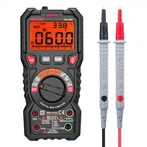Instructions for use of optical microscope
(1) During the experiment, the microscope should be placed on the table slightly to the left, and the mirror base should be about 6-7 cm away from the edge of the table.
(2) Turn on the light source switch and adjust the light intensity to a suitable size.
(3) Turn the revolving objective lens so that the low magnification lens is facing the light hole on the stage. First adjust the lens to about 1-2cm away from the stage, then look into the eyepiece with the left eye, then adjust the height of the condenser, and adjust the aperture diaphragm to the maximum, so that the light enters the lens barrel through the condenser At this time, the field of vision is bright.
(4) Place the slide to be observed on the stage so that the observed part of the slide is in the center of the light hole, and then clamp the slide with a specimen holder.
(5) First observe with a low power lens (objective lens 10X, eyepiece 10X). Before observation, first turn the coarse focusing handwheel to raise the stage, and the objective lens gradually approaches the glass slide. It should be noted that the objective lens cannot touch the glass slide to prevent the lens from crushing the glass slide. Then, look into the eyepiece with the left eye, and keep the right eye closed (it is necessary to develop the habit of observing with a microscope with both eyes open, so that you can look at the drawing with the right eye while observing), and turn the coarse focus knob so that The stage is slowly lowered, and after a while a magnified image of the material in the slide can be seen.
(6) If the object image seen in the field of view does not meet the experimental requirements (the object image deviates from the field of view), slowly adjust the moving handle of the stage. When adjusting, it should be noted that the moving direction of the glass slide is exactly opposite to the moving direction of the object image seen in the field of view. If the object image is not very clear, you can adjust the micro focus handwheel until the object image is clear.
(7) Generally, for microscopes with normal functions, the low magnification objective lens and the high magnification objective lens are basically par-focus. Use the manual focus wheel to adjust.
(8) After changing the high-magnification objective lens and seeing the object image clearly, you can adjust the size of the aperture diaphragm or the height of the condenser according to the needs, so that the light meets the requirements (generally, when the low-magnification objective lens is replaced with a high-magnification objective lens for observation, the field of view should be slightly lower. It gets darker, so you need to adjust the light intensity).
(9) After the observation, the objective lens should be removed from the light hole first, then the aperture diaphragm should be adjusted to the maximum, and then the stage should be lowered slowly, and the parts should be checked for damage (especially check whether the objective lens is If it is stained with water or oil, wipe it off with lens paper), after inspection and treatment, it can be packed.






